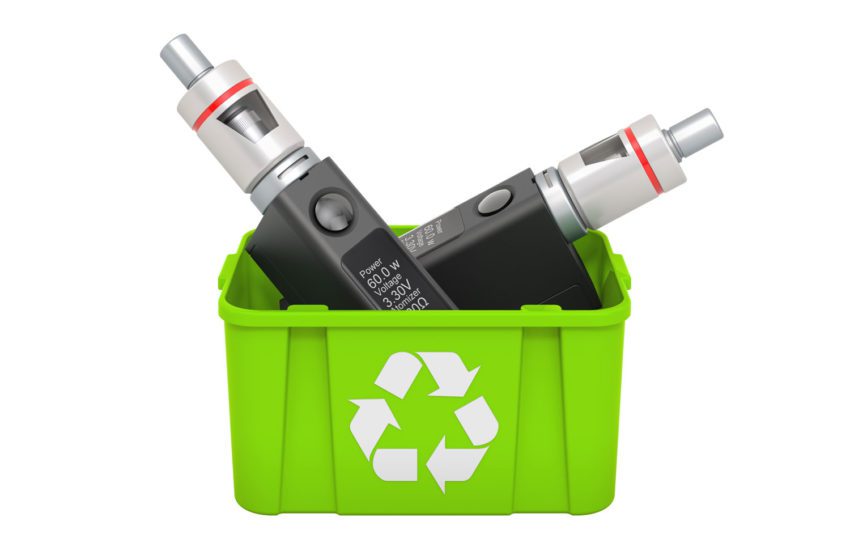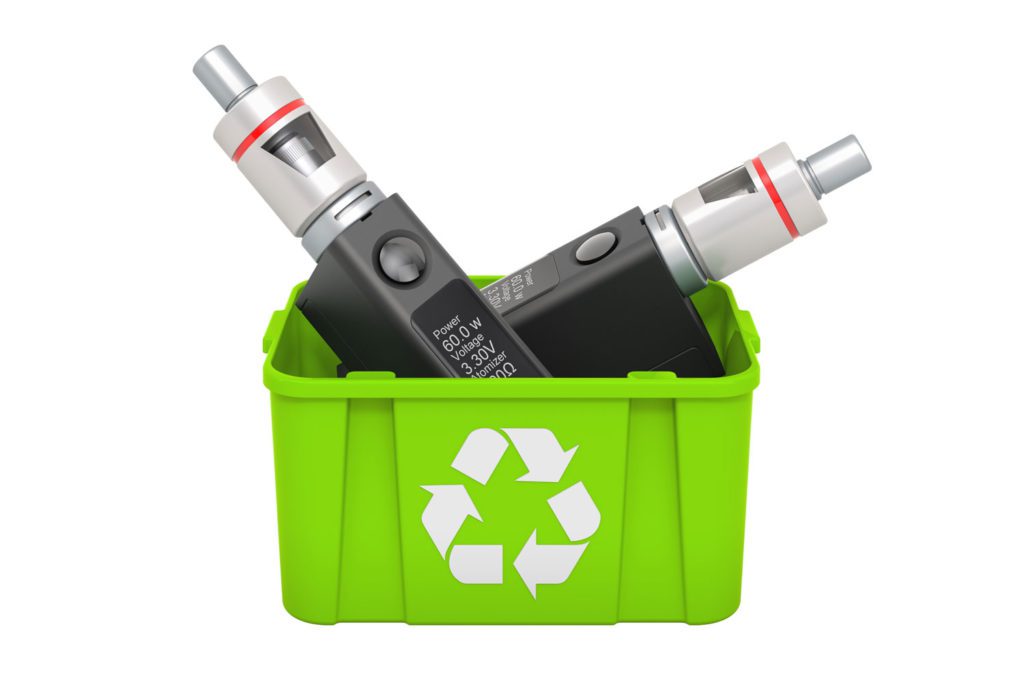Report Details Vapor Recycling Programs
- Featured News This Week Sustainability
- September 2, 2022
- 0
- 3 minutes read


Research and Markets has published a global overview of recycling programs for e-cigarettes, heated tobacco products and vaporizers.
Every year, manufacturers and consumers generate 44.7 million tons of e-waste containing up to $65 billion worth of raw materials like gold, silver and platinum. The amount of global e-waste is expected to increase by almost 17 percent to 52.2 million tons in 2021, or around 8 percent every year.
Vape products are e-waste because they contain lithium-ion batteries, a heating element and a circuit board, which can contain plastics and heavy metals.
While the world’s leading jurisdictions have legislation governing the management of e-waste in general, they generally have no rules designed specifically for e-cigarettes, heated tobacco products or vaporizers.
To fill the void, manufacturers of electronic nicotine delivery devices have developed their own initiatives to tackle e-waste. The Research and Markets report list the following examples:
- Philip Morris International has established hubs in Europe and Asia that inspect, process and separate materials from electronic devices for recycling.
- BAT has replaced plastic elements of vapor products with pulp-based alternatives.
- JTI launched a return scheme of used devices through the recycling boxes at shops.
- Imperial Brands has launched take-back recycling schemes for used vaping devices and pods.
- Other vape companies, such as DotMod, Shanlaan and Dovpo, have launched their own recycling programs by return schemes. Innokin is working on battery utilization programs. Recycling companies, such as Gaiaca and TerraCycle cooperate with vape manufacturers to provide services for collecting and recycling e-waste.
- The Bowman company offers pod refill stations to reduce plastic usage for vapor bottles production in future.
